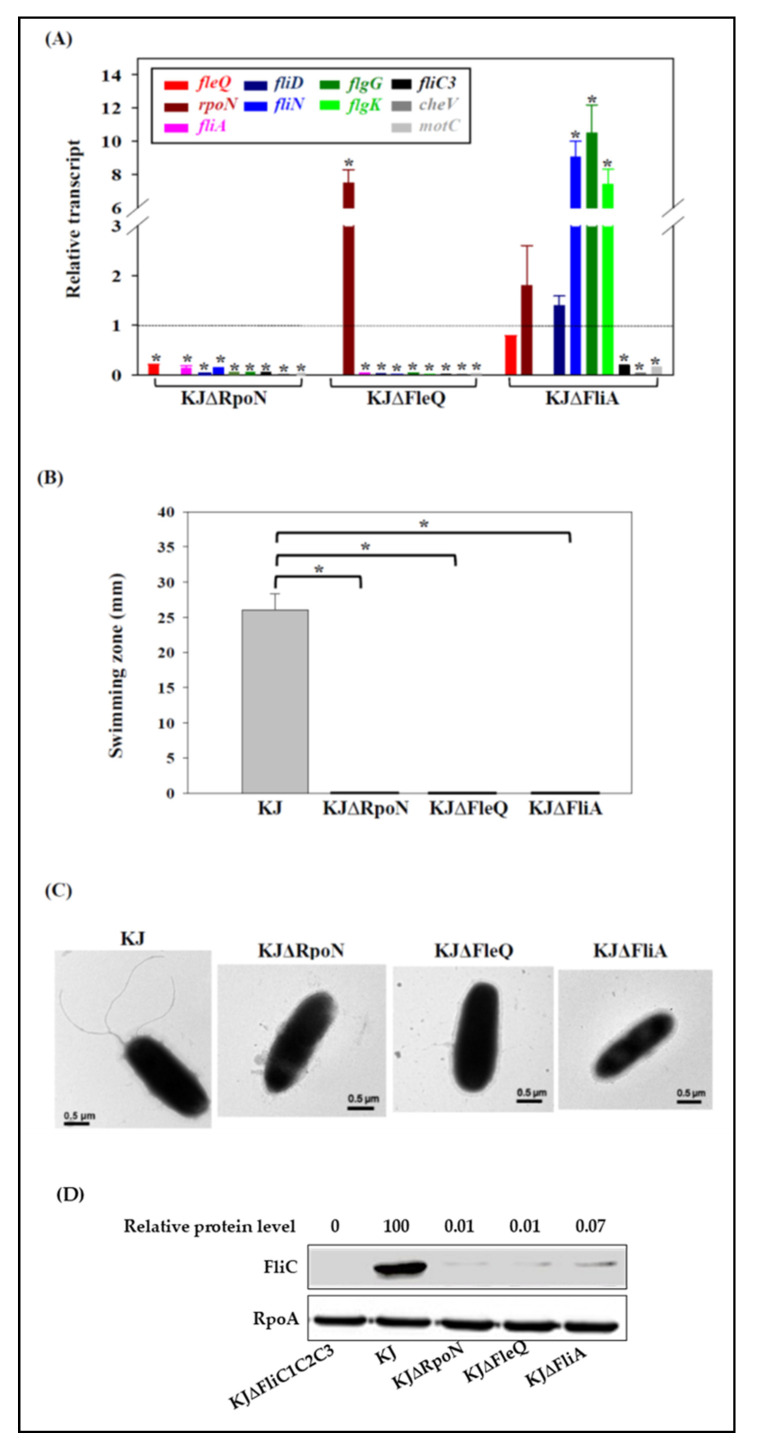Figure 4.
Impact of rpoN, fleQ, and fliA on flagellum-associated gene expression, swimming motility, flagellum morphology, and flagellin protein levels. (A) The impact of rpoN, fleQ, and fliA on flagellum-associated gene expression. Overnighted cultured bacterial cells (KJ, KJΔRpoN, KJΔFleQ, and KJΔFliA) were inoculated into fresh LB broth and then grown for 5 h before a qRT-PCR. The expression levels of the assayed genes were normalized to those of the 16 S ribosomal RNA gene. The relative transcript was calculated by dividing the mRNA levels of the wild-type by those of the mutant indicated. The mean and SD of the three independent experiments are shown. *, a relative transcript greater than 2 or less than 0.5 was considered to be significant. (B) The impact of rpoN, fleQ, and fliA on swimming motility. Overnighted cultured bacterial cells were inoculated into fresh LB broth and then grown for 5 h before testing. A five-microliter bacterial cell suspension was inoculated into swimming agar and then incubated at 37 °C for 48 h. The swimming zones were recorded. The data are the means of three independent experiments. The error bars indicate the standard deviations of three triplicate samples. *, p < 0.05, significance calculated using the Student’s t-test. (C) The impact of rpoN, fleQ, and fliA on flagella morphology. The flagella were negatively stained with 1% phosphotungstic acid (pH 7.4) and observed using TEM. (D) The impact of rpoN, fleQ, and fliA on flagellin protein levels. The proteins of a whole-cell extract were separated using SDS-PAGE and immunoblotting with anti-FliC3 and anti-RpoA antibodies.

